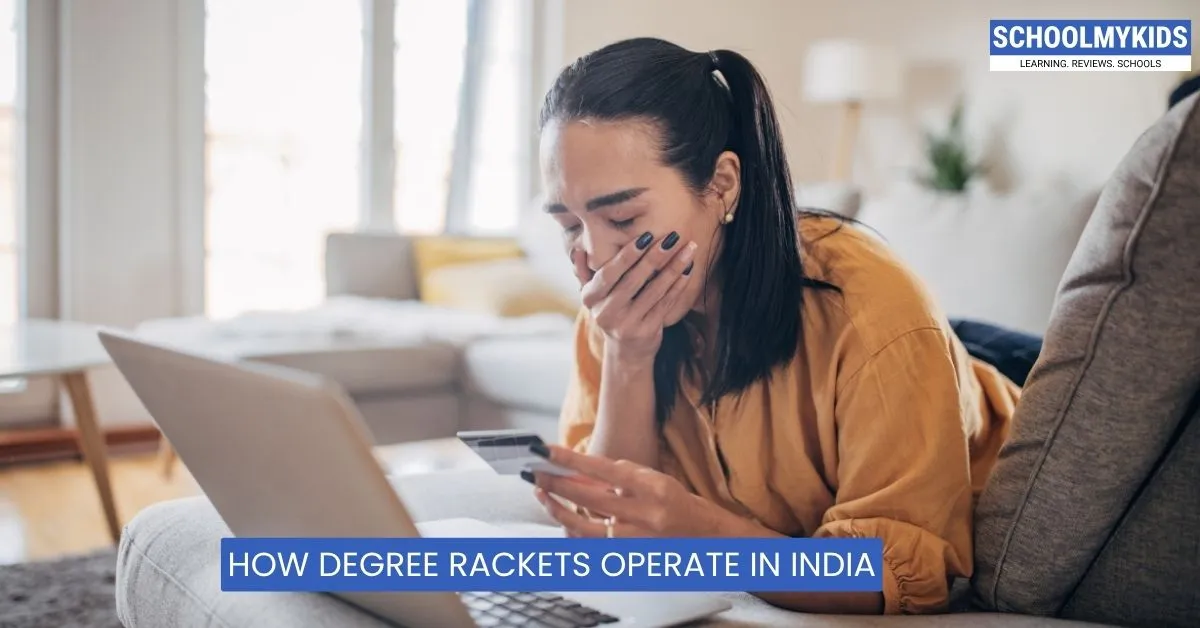In India, a university degree is often seen as a golden ticket to a stable job, social respect, and a better life. This immense societal pressure and high demand have spawned a dark, multi-crore parallel industry: the world of sophisticated degree rackets. These are not just individual acts of forgery; they are organised criminal enterprises that prey on desperation, ambition, and a lack of awareness.
Understanding how these rackets operate is the first step in protecting oneself from them. They have a well-defined structure, a diverse set of methods, and a clear target audience, making them a pervasive threat to the integrity of our education system.
The Anatomy of a Racket: Key Players and Their Roles
A degree racket is a complex network with each player having a specific role.
The Masterminds
At the top are the masterminds—often the owners of unaccredited, fake institutions or, more insidiously, corrupt high-ranking officials within legitimate universities. They control the entire operation, from printing fake certificates to managing the flow of money.
The Agents and Touts
These are the foot soldiers of the racket. They operate on the ground and online, using social media and local contacts to find "customers." They are expert salespeople who make convincing promises of "guaranteed degrees without exams" or "back-dated certificates" for a hefty price.
The Insiders
This is the most critical link for the most dangerous scams. These are corrupt clerical staff, data entry operators, or examination officials within real, recognised universities. They have access to the university's official records, blank marksheets, and security holograms, allowing them to create fraudulent documents that look entirely authentic.
The Customers
The clientele is diverse. It includes students who failed to secure a legitimate degree, individuals seeking a required qualification for a government job or promotion, and people looking to go abroad who need a degree for visa purposes.
The Modus Operandi: Four Common Methods of Degree Fraud
Degree rackets use several methods, ranging from the crude to the highly sophisticated.
Method 1: The Completely Fabricated University
This is the most straightforward type of fraud. The racket sets up an entire fake institution from scratch. They create a professional-looking website, print glossy brochures, and may even rent a small office to serve as a "campus." These institutions are not recognised by the UGC and have no legal authority to grant degrees. Their entire business is printing and selling worthless degree certificates to unsuspecting students.
Method 2: The "Back-Door Entry" into Real Universities
This method is far more dangerous because the final document appears genuine. Agents work in collusion with insiders at a real, recognised university. The customer pays a large sum (often lakhs of rupees), and the corrupt official illegally inserts the customer's name into the university’s official records for a previous graduating batch. A "genuine" degree and marksheet are then printed and issued. Since the student's name exists in the university's database, these degrees can often pass initial verification checks, making them very difficult to detect.
Method 3: The Illegal Franchise (Off-Campus Centre)
In this model, a recognised university—often a private one with lax oversight—illegally sells its name and affiliation to hundreds of small, unapproved "study centres" in different cities and states. These centres are nothing more than small teaching shops. They enrol students, conduct sham examinations (or none at all), and collect fees. The main university, in violation of UGC's territorial jurisdiction rules, simply acts as a printing press, issuing degrees to students it never taught or assessed.
Method 4: The Examination Racket
This method focuses on cheating the examination process itself rather than faking the final degree. Rackets use several techniques:
- Paper Leaks: Corrupt officials or printing press employees leak the question paper hours before the exam, which is then sold for a high price.
- Impersonation ("Solvers"): A brilliant student or a professional is hired to write the exam on behalf of the paying candidate by using forged identity cards.
- Tech-Aided Cheating: Sophisticated methods are used, such as transmitting answers to candidates via hidden Bluetooth devices.
Red Flags: How to Spot a Degree Racket
You can protect yourself by looking out for these common warning signs:
- Guarantees: Any promise of a "100% guaranteed pass" or a "degree without exams" is a major red flag.
- Unusually Short Duration: Offers to complete a three-year degree in one year or in a "single sitting."
- Cash-Only Deals: Touts and agents often demand large sums of money in cash to avoid a paper trail.
- No Physical Campus: The institution has no proper campus, library, or faculty when you try to visit.
- Missing from Official Lists: The university or college name is absent from the official websites of the UGC and AICTE.
Conclusion: The High Price of a Shortcut
Degree rackets thrive because people look for easy shortcuts. However, the price of this shortcut is devastatingly high. Getting caught with a fraudulent degree can lead to immediate job termination, social disgrace, and even criminal prosecution for fraud and forgery. The only way to build a secure future is through legitimate, hard-earned education. A few minutes of careful verification is infinitely better than a lifetime of risk and regret.








Be the first one to comment on this story.